In today’s rapidly evolving kitchen appliance industry, innovation is not just a buzzword; it’s a necessity for survival and success. As consumers’ preferences shift and technology advances at breakneck speed, the ability to innovate and bring new products to market quickly is more crucial than ever. This is where the concept of a 15-day rapid prototyping service emerges as a beacon of efficiency and innovation, reshaping the landscape of kitchen appliance design and production.
TheUrgencyinKitchenApplianceInnovation
In the ever-evolving landscape of the kitchen appliance industry, the urgency to innovate cannot be overstated. The world of kitchen tech is advancing at a breakneck pace, driven by consumer expectations, technological breakthroughs, and the relentless pursuit of convenience and efficiency. This urgency is rooted in several key factors that are reshaping the industry.
Consumer Expectations Are SkyrocketingToday’s consumers are more informed than ever before, thanks to the internet and social media. They are not just looking for basic functionality; they are seeking appliances that not only simplify their lives but also enhance their kitchen experience. From smart refrigerators that can order groceries to cooktops that adjust to your cooking style, the expectations for kitchen appliances have become almost limitless.
Technological Advancements Are a Double-Edged SwordOn one hand, technological advancements have opened up a world of possibilities for kitchen appliance manufacturers. New materials, innovative features, and cutting-edge sensors are all at their disposal. On the other hand, these advancements come with a steep learning curve and a constant need for innovation to keep up with the competition.
Market Dynamics Are Rapidly ChangingThe kitchen appliance market is incredibly dynamic. Trends can emerge and fade within months, and what’s in vogue today could be obsolete tomorrow. This means that companies must be agile and responsive to stay relevant. The urgency to innovate is compounded by the fact that the competition is fierce, with both established players and new entrants vying for market share.
Regulatory Compliance Adds PressureRegulations are a constant concern for the kitchen appliance industry. New safety standards, energy efficiency requirements, and certifications can significantly impact product development timelines and costs. The urgency to innovate is not just about creating the next big thing; it’s also about ensuring compliance with a complex web of regulations.
Consumer Behavior Shifts Are UnpredictableConsumer behavior is as unpredictable as it is influential. For instance, the rise of the health-conscious consumer has led to a surge in demand for appliances that can help track and manage food preparation, from calorie counting to nutrient analysis. Keeping up with these shifts requires a quick response and a willingness to pivot product development strategies.
The Need for Customization Is on the RiseConsumers today are not just looking for standardized products; they want appliances that cater to their unique needs and preferences. Whether it’s a custom-sized fridge or a stove with a specific heat distribution pattern, the need for customization is driving the urgency to innovate.
Resource Constraints Can Limit InnovationDespite the push for innovation, resource constraints can often limit the ability of companies to bring new products to market. Budgets, time, and human capital are all finite, and the pressure to maximize returns on investment can sometimes hinder the development of truly groundbreaking appliances.
Innovation is Not Just About New ProductsWhile new products are often the headline-grabbers, innovation in the kitchen appliance industry also encompasses improvements in manufacturing processes, supply chain management, and customer service. The urgency to innovate extends beyond the product itself and into every aspect of the business.
The Importance of Collaboration Cannot Be IgnoredFinally, the urgency to innovate is underscored by the need for collaboration. No single company can innovate in isolation. Partnerships with technology providers, research institutions, and even consumers themselves are crucial for staying ahead in a market that is constantly evolving.
In conclusion, the urgency to innovate in the kitchen appliance industry is a multifaceted challenge that requires a combination of speed, agility, and strategic foresight. It’s a race against time to meet the ever-growing demands of consumers, comply with regulations, and stay competitive in a market that is always looking for the next big thing.
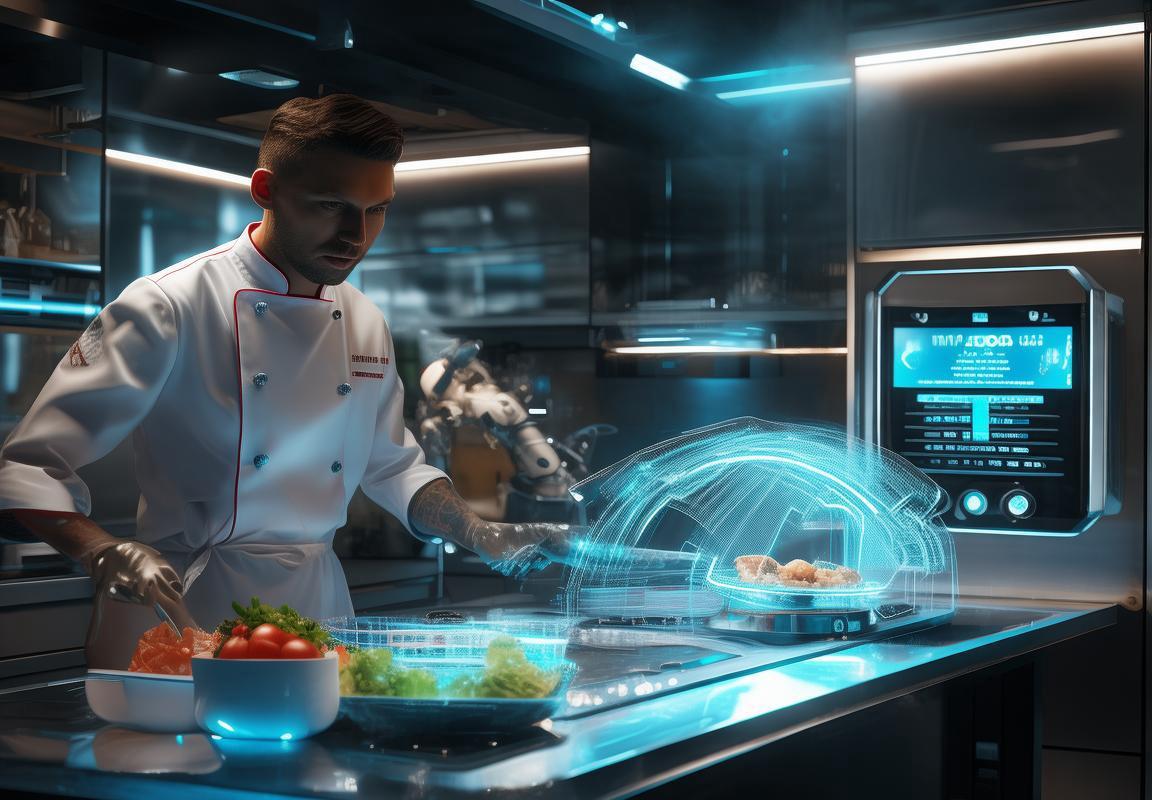
The15-DayRapidPrototypingService:WhatItOffers
In today’s hyper-competitive landscape, the kitchen appliance industry is under constant pressure to innovate and evolve. The consumer’s expectations are higher than ever, demanding appliances that not only perform well but also incorporate the latest technology and aesthetics. This relentless pursuit of innovation has given rise to the necessity of a swift and efficient prototyping process. Enter the 15-day rapid prototyping service, a solution that’s reshaping the way kitchen appliances are developed.
This service is a beacon of efficiency in a market where time is of the essence. It offers a streamlined approach to creating prototypes, allowing manufacturers to bring new ideas to life in a fraction of the time traditional methods would take. The key to this rapid turnaround lies in advanced technologies and methodologies that are specifically designed to expedite the prototyping process.
One of the cornerstones of this service is the use of 3D printing, a technology that has revolutionized the way prototypes are made. By using 3D printing, designers and engineers can create physical models from digital files quickly and with precision. This not only saves time but also allows for more frequent iterations, as adjustments can be made and reprinted in a matter of hours.
Another vital component of the 15-day rapid prototyping service is the integration of advanced simulation software. This software enables engineers to virtually test the functionality and durability of the appliance before any physical prototypes are produced. This means that potential issues can be identified and resolved early in the design phase, significantly reducing the need for costly rework.
The service also leverages the expertise of a dedicated team of professionals who specialize in kitchen appliance design. These experts are well-versed in the latest trends, regulations, and industry standards, ensuring that the prototypes meet all necessary requirements. Their collaborative approach allows for seamless communication and quick decision-making, which is crucial for meeting tight deadlines.
Moreover, the 15-day rapid prototyping service is flexible and adaptable to a wide range of design needs. Whether a company is looking to test a new concept or refine an existing design, this service can accommodate various project scopes. It’s not just about speed; it’s about providing a comprehensive solution that addresses the unique challenges of each project.
The service also emphasizes the importance of user experience. Prototypes are not just functional models; they are also designed to reflect the end-user’s interaction with the appliance. This means that the user interface, ergonomics, and usability are all considered during the prototyping process. By creating a prototype that is as close to the final product as possible, manufacturers can gather valuable feedback and make informed decisions that will enhance the user experience.
In addition to speed and efficiency, the 15-day rapid prototyping service offers a high level of customization. Manufacturers can choose from a variety of materials, finishes, and features to ensure that the prototype accurately represents their vision. This level of control is crucial for creating a product that stands out in a crowded market.
Furthermore, the service is designed to be cost-effective. By reducing the time and resources required for traditional prototyping, companies can save on labor, materials, and equipment costs. This cost savings can be reinvested into further research and development, allowing for continuous improvement and innovation.
The 15-day rapid prototyping service is a testament to the power of technology and human ingenuity. It offers a solution that is not only fast but also precise, flexible, and user-focused. In a market where innovation is king, this service is a valuable asset for companies looking to bring their most innovative kitchen appliances to market efficiently and effectively.
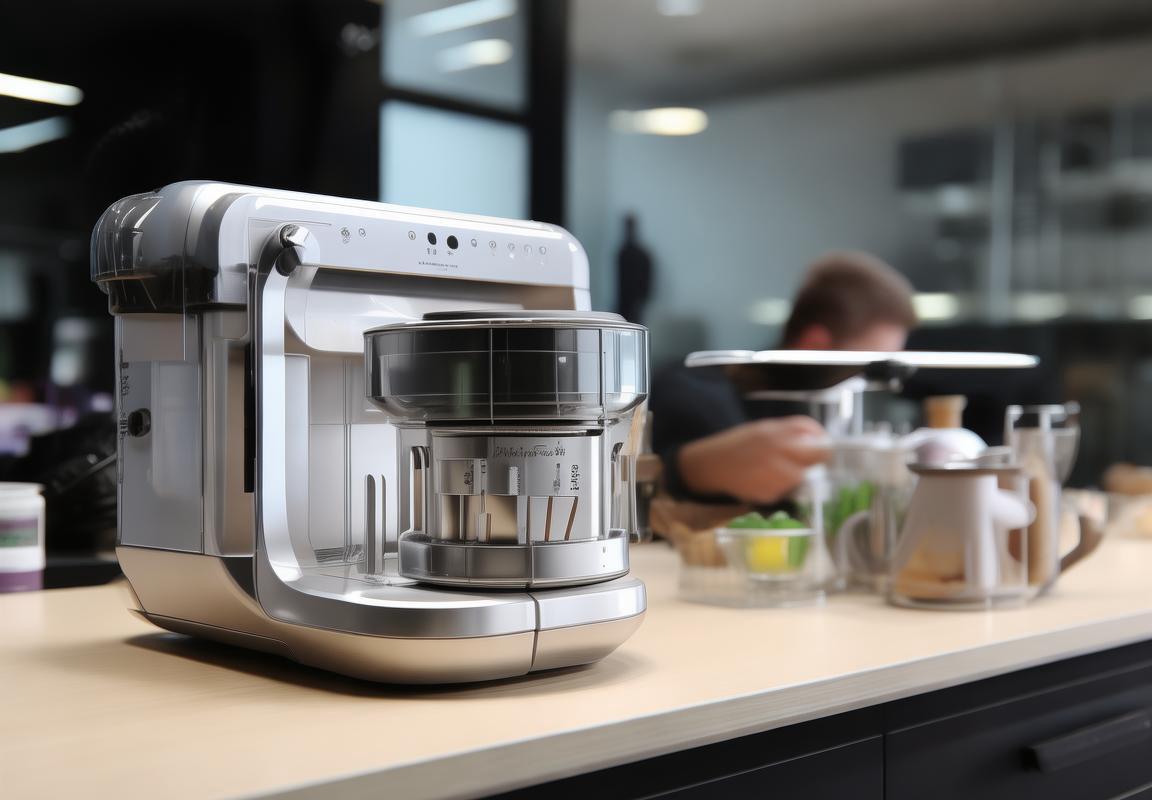
EfficiencyRedefined
In the kitchen appliance industry, the traditional prototyping process often feels like a slow crawl. However, the introduction of the 15-Day Rapid Prototyping Service has completely redefined efficiency. This innovative approach to product development streamlines the process, allowing companies to respond to market demands with lightning speed.
Prototyping traditionally involves multiple stages, from concept to final product, which can take weeks or even months. This extended timeline not only delays the introduction of new products to the market but also increases the cost of development. The 15-Day Rapid Prototyping Service, on the other hand, condenses this process into a mere 15 days.
This time frame is achievable through a combination of advanced technologies and streamlined workflows. For instance, 3D printing technology has revolutionized the prototyping process by allowing designers and engineers to create physical models quickly. These models can then be tested and refined, all within a fraction of the time it would take with traditional methods.
One of the key aspects of the service is the emphasis on collaboration. By bringing together teams of experts, including designers, engineers, and material scientists, the service ensures that every aspect of the prototyping process is optimized. This interdisciplinary approach means that potential issues are identified and resolved early on, which can save significant time and resources.
Moreover, the service leverages software that enables real-time data analysis and simulation. This means that designers can iterate on their models with precision, knowing that their changes are grounded in real-world data. This level of detail and accuracy was previously unattainable within such a short timeframe.
Another factor that contributes to the efficiency of the 15-Day Rapid Prototyping Service is the use of modular components. By designing appliances with modular parts, companies can quickly swap out elements for testing purposes. This modular approach not only speeds up the prototyping phase but also makes it easier to scale up production.
The speed of the service also extends to the supply chain. Suppliers who work with rapid prototyping services are often able to provide materials and components on a just-in-time basis, reducing lead times and inventory costs. This just-in-time philosophy is particularly beneficial in a market where product lifecycles are short and consumer preferences can change rapidly.
In addition to time savings, the 15-Day Rapid Prototyping Service offers several other efficiencies:
-
Cost Reduction: By cutting down the time it takes to develop a product, companies can save on labor, materials, and other overhead costs.
-
Enhanced Flexibility: The ability to quickly iterate on designs means that companies can easily incorporate customer feedback or adapt to market changes.
-
Increased Quality Control: With a shorter development cycle, it’s easier to catch and correct design flaws early on, leading to higher quality products.
-
Market Responsiveness: Companies can bring new products to market faster, capitalizing on emerging trends and consumer demands.
-
Innovation Acceleration: The rapid prototyping process fosters a culture of innovation, where teams are encouraged to experiment and push the boundaries of what’s possible.
In the competitive kitchen appliance industry, efficiency is not just a nice-to-have—it’s a necessity. The 15-Day Rapid Prototyping Service has redefined what’s possible in terms of speed, cost, and quality. By embracing this innovative approach, companies can stay ahead of the curve, ensuring that their products not only meet but exceed consumer expectations.
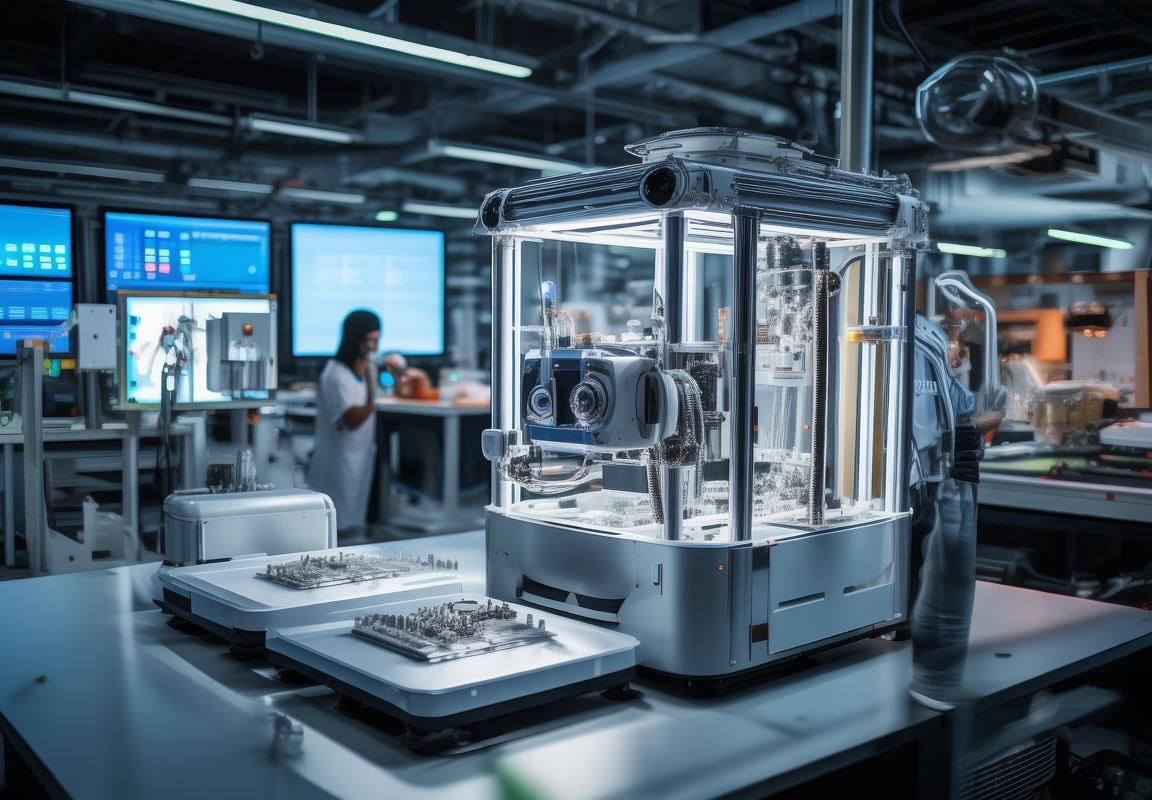
AdvantagesforEuropeanandAmericanMarkets
In the competitive landscape of the European and American markets, the kitchen appliance industry is constantly seeking ways to innovate and differentiate its products. The 15-day rapid prototyping service has emerged as a powerful tool, offering several advantages that can significantly impact a company’s success in these key regions.
The demand for speed and innovation in the European market is relentless. Consumers here are not only looking for advanced features but also for appliances that reflect the latest design trends and technological advancements. The 15-day rapid prototyping service allows companies to quickly adapt to these demands, ensuring that their products are not just competitive but also cutting-edge.
In the United States, the kitchen appliance market is characterized by a diverse range of consumers with varying preferences. Whether it’s the urban dweller seeking compact and energy-efficient appliances or the gourmet cook looking for professional-grade equipment, the rapid prototyping service provides the agility to cater to these diverse needs swiftly.
One of the primary advantages is the acceleration of the product development cycle. Traditionally, the time from concept to market can be lengthy, with numerous stages involving design, prototyping, testing, and iteration. The 15-day service condenses this process, enabling companies to bring products to market faster than their competitors.
This accelerated timeline is particularly beneficial for European and American consumers who are accustomed to having the latest technologies at their fingertips. It allows companies to stay ahead of the curve, capitalizing on emerging trends and consumer behaviors before they become mainstream.
Moreover, the service reduces the financial risk associated with product development. By swiftly creating prototypes, companies can gather valuable feedback from potential customers, which can be used to refine the product before a full-scale production run. This iterative approach minimizes the cost of retooling and the risk of investing in a product that may not resonate with the market.
In the European market, where sustainability is a key concern, the rapid prototyping service allows companies to test eco-friendly designs quickly. This is crucial for brands looking to establish a reputation for environmental responsibility, a trait that is increasingly valued by consumers.
Similarly, in the United States, the rapid prototyping service supports the creation of smart appliances that integrate with the Internet of Things (IoT). As consumers embrace smart home technology, companies that can offer these integrated solutions have a competitive edge.
Another advantage is the ability to customize products based on regional preferences. The 15-day service enables companies to create localized prototypes that cater to specific market segments, whether it’s a particular style, size, or feature set that resonates with a particular demographic.
The service also fosters collaboration between design teams, engineers, and marketing departments. By working together on a tight deadline, these teams can achieve a greater understanding of the market and the needs of the consumer, leading to more informed product development decisions.
Furthermore, the rapid prototyping service encourages a culture of continuous improvement. With the ability to quickly test and refine prototypes, companies can iterate on their designs, making incremental improvements that can lead to significant advancements in product performance and user experience.
In conclusion, the 15-day rapid prototyping service offers a suite of advantages that are particularly well-suited to the European and American markets. From reducing time to market to fostering innovation and customization, this service is a game-changer for companies looking to thrive in these dynamic and sophisticated consumer landscapes.
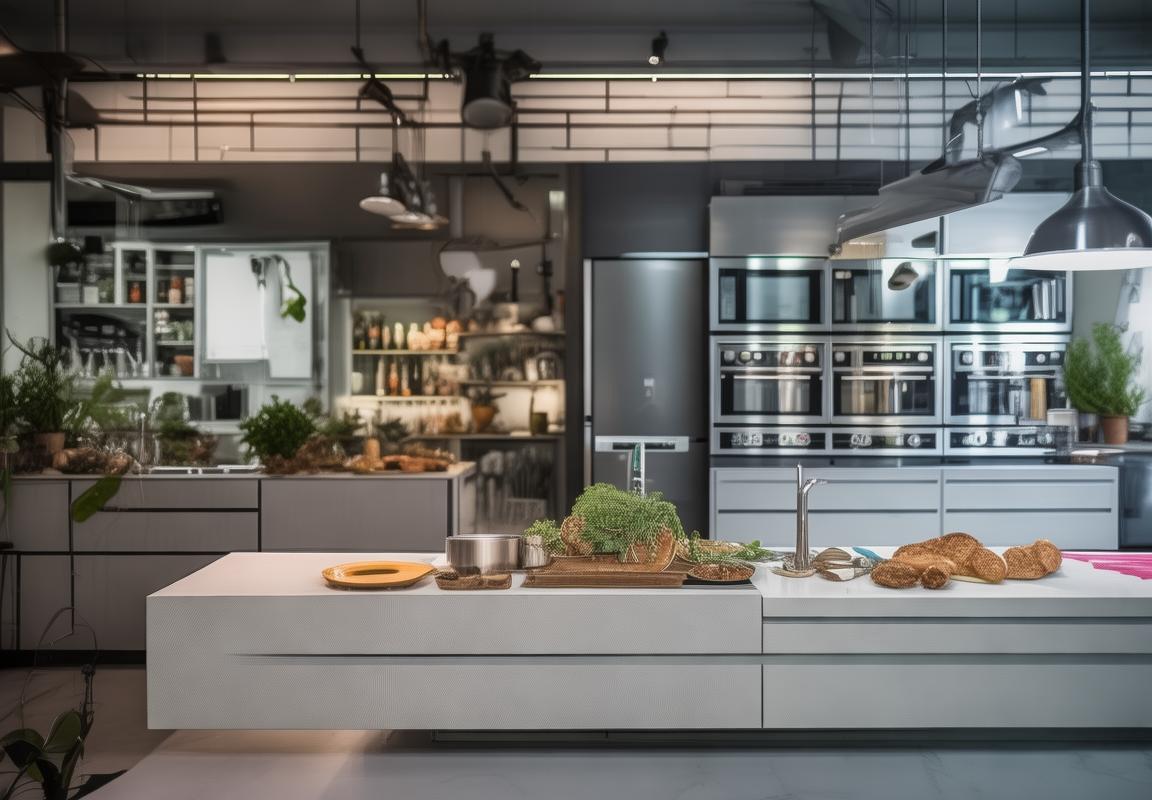
CaseStudies:SuccessStoriesfromtheField
In the ever-evolving landscape of kitchen appliance innovation, there are tales of triumph where the 15-day rapid prototyping service has played a pivotal role. Let’s delve into some success stories from the field that showcase how this service has propelled companies to the forefront of the industry.
The story of Gourmet Appliances begins with a vision for a revolutionary countertop oven that could mimic the cooking capabilities of a professional kitchen. With time being of the essence, the company turned to the 15-day rapid prototyping service. The result? A fully functional prototype that was tested and refined in just two weeks. This swift turnaround allowed Gourmet Appliances to secure a place at major trade shows, where their innovative oven drew significant interest and preorder inquiries.
Similarly, in the realm of smart kitchen technology, HomeTech Innovations faced a challenge. They were developing a voice-activated kitchen assistant that could manage multiple appliances simultaneously. The complexity of the project required a rapid prototyping solution. Within the 15-day window, the team was able to create a working prototype that was not only functional but also user-friendly. This prototype was instrumental in securing a partnership with a leading smart home platform, setting the stage for a successful product launch.
For EcoChef Appliances, the key to success lay in sustainability. They were aiming to introduce an energy-efficient refrigerator that could also reduce food waste. The traditional prototyping process was too slow, so they opted for the 15-day service. The result was a refrigerator prototype that was both energy-saving and capable of tracking and optimizing food storage conditions. This prototype not only impressed potential investors but also won the company a prestigious green innovation award.
In the competitive world of kitchen appliances, design is everything. Culinary Creations understood this well when they set out to design a sleek, modern range that could cater to both professional chefs and home cooks. With the help of the 15-day rapid prototyping service, they were able to create a range prototype that was both aesthetically pleasing and highly functional. The prototype was showcased at an international design fair, where it won over buyers and secured Culinary Creations a spot on the shelves of top retailers.
Another success story comes from KitchenCrafters, a company specializing in custom kitchen solutions. They were approached by a renowned chef to develop a line of kitchen tools that would streamline his cooking process. The project required a high degree of customization, which would have been impossible with standard prototyping timelines. The 15-day rapid prototyping service allowed KitchenCrafters to quickly iterate on designs, ensuring that the final product met the chef’s exact specifications. The resulting tools have since become a staple in professional kitchens around the world.
The tale of SmartCook Appliances is one of collaboration and innovation. They were tasked with creating a multi-functional kitchen island that could serve as a cooking surface, a dining area, and a storage unit. The complexity of the project could have easily led to delays, but the 15-day rapid prototyping service stepped in to save the day. The team was able to create a prototype that was not only visually stunning but also highly practical. This prototype was a hit at a major kitchen and bath show, leading to a significant increase in sales and partnerships.
In the world of kitchen appliances, the story of the 15-day rapid prototyping service is one of agility and adaptability. From countertop ovens to smart kitchen assistants, from sustainable refrigerators to custom kitchen tools, the service has been a catalyst for success. These success stories from the field are a testament to the power of rapid prototyping in driving innovation and bringing groundbreaking products to market swiftly.
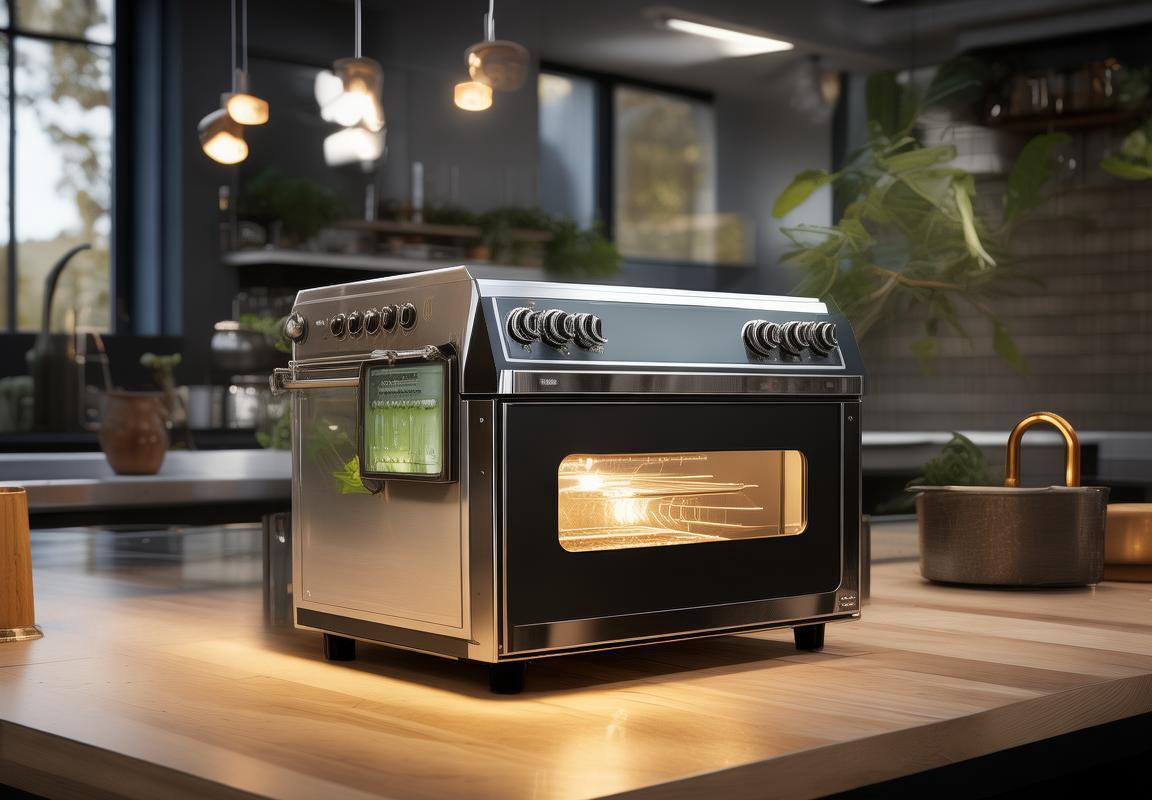
Cost-Effectiveness:ANecessityinCompetitiveMarkets
In the realm of kitchen appliance innovation, cost-effectiveness is not just a buzzword; it’s a necessity for survival in a fiercely competitive market. Let’s delve into why this aspect is so crucial, especially in the European and American markets.
The consumer landscape in these regions is distinct, characterized by a high level of sophistication and a preference for premium products. As such, companies must navigate a tightrope of quality and affordability. The 15-day rapid prototyping service emerges as a beacon of hope, offering a path to cost-effective innovation.
One of the primary advantages of this service is the reduction in time-to-market. By cutting down the prototyping timeline to just 15 days, companies can save on the costs associated with longer development cycles. This swift turnaround means fewer resources are tied up, and capital can be reinvested in other critical areas, such as marketing or R&D.
Furthermore, the streamlined process minimizes the risk of costly redesigns. In the past, prototypes that took months to develop often required significant adjustments before they could be brought to market. With the 15-day service, these iterations can be done much more quickly and with a clearer understanding of the final product’s requirements, leading to a more efficient use of resources.
In the European market, where energy efficiency is a key concern, cost-effectiveness is doubly important. Consumers are willing to pay a premium for appliances that save them money in the long run. The rapid prototyping service allows manufacturers to test various energy-saving technologies and quickly refine them to meet stringent efficiency standards without incurring excessive costs.
Similarly, in the United States, where kitchen appliances are a significant household investment, affordability is a deciding factor. The 15-day service enables companies to create prototypes that balance quality with price, ensuring that they remain competitive in a market where consumers have a wide array of options.
Another aspect of cost-effectiveness is the reduced need for physical inventory. With the ability to quickly iterate on prototypes, companies can produce smaller batches of products, which in turn reduces storage and shipping costs. This lean approach is particularly beneficial for companies looking to launch limited edition or seasonal products.
Moreover, the rapid prototyping service fosters a culture of continuous improvement. By rapidly testing and refining prototypes, companies can gather valuable feedback from the market at a low cost. This iterative process can lead to a product that is not only cost-effective but also meets the evolving needs and expectations of consumers.
In the European and American markets, where innovation is key to staying relevant, the 15-day rapid prototyping service is a strategic tool. It allows companies to be nimble, adapting to market trends and consumer demands swiftly. This agility is essential in a competitive landscape where the only constant is change.
The service also plays a role in reducing the environmental impact of product development. By minimizing the use of materials and energy, companies can produce appliances that are not only cost-effective but also sustainable. This aligns with the growing consumer preference for eco-friendly products, offering companies a competitive edge.
In conclusion, the 15-day rapid prototyping service is a linchpin for cost-effectiveness in the kitchen appliance industry, particularly in the European and American markets. It allows for quicker time-to-market, reduces the risk of costly redesigns, and fosters a culture of innovation and sustainability. For companies aiming to thrive in these competitive markets, embracing this service is not just a smart move—it’s a necessity.
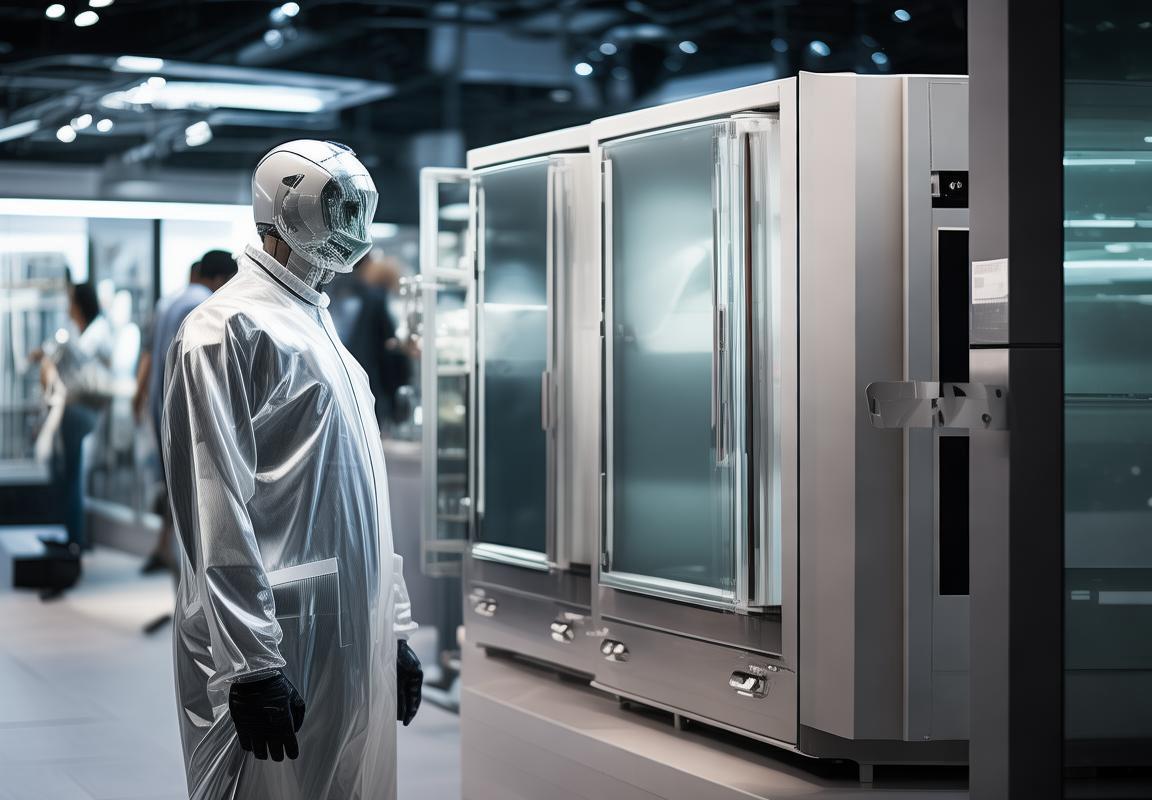
TheFutureofKitchenApplianceDesign
In the ever-evolving landscape of kitchen appliance design, the future holds a myriad of possibilities that promise to revolutionize the way we interact with our culinary companions. From smart integration to sustainable solutions, here are some key trends shaping the future of kitchen appliance design.
The integration of artificial intelligence (AI) is poised to become a cornerstone of future kitchen appliances. Imagine a fridge that not only keeps your food fresh but also suggests recipes based on the contents you have. These appliances will learn from your habits, adjusting settings and providing personalized cooking advice to enhance both efficiency and culinary experience.
Sustainability is no longer just a buzzword; it’s a critical factor in the design process. Companies are increasingly focusing on creating appliances that are energy-efficient, made from recycled materials, and have a minimal environmental footprint. This shift is driven by consumer awareness and regulatory requirements that demand more eco-friendly products.
Smart connectivity is not just a trend; it’s becoming an expectation. Future kitchen appliances will be part of a larger smart home ecosystem, allowing users to control and monitor their appliances remotely through smartphones or voice assistants. This level of connectivity will not only provide convenience but also enable appliances to communicate with each other, creating a seamless and efficient kitchen environment.
Designers are pushing the boundaries of what kitchen appliances can do. We’re seeing a move towards multifunctionality, where a single appliance can perform multiple tasks. For instance, an oven that can also serve as a microwave or a steamer, or a blender that can also juice fruits and vegetables. This not only saves space but also simplifies the cooking process.
Customization is becoming more accessible with advancements in 3D printing technology. Consumers will be able to personalize their kitchen appliances, choosing colors, materials, and even features that suit their individual needs and preferences. This level of personalization is not just limited to aesthetics; it can also extend to functionality, allowing users to tailor their appliances to their specific cooking habits.
The kitchen of the future will be a hub of health and wellness. Appliances will not only help prepare nutritious meals but also provide insights into their nutritional value. Smart scales, for example, could track portion sizes and offer dietary advice, while ovens could have settings optimized for healthy cooking methods like steaming or air frying.
As technology advances, we can expect to see appliances that are more intuitive and user-friendly. Touchscreens will be replaced by voice-activated controls, and appliances will learn from user habits to anticipate their needs. This shift towards more intelligent appliances will make cooking not just easier but also more enjoyable for individuals of all ages and abilities.
Energy efficiency is a concern that will continue to drive innovation. Designers are exploring new materials and technologies to reduce energy consumption, from LED lighting in refrigerators to induction cooktops that use less heat than traditional gas burners.
Lastly, the rise of modular kitchen appliances is a trend that’s gaining traction. Modular appliances can be easily upgraded or replaced, allowing homeowners to keep their kitchen equipment up-to-date without the need for a complete overhaul. This approach is both environmentally friendly and cost-effective.
The future of kitchen appliance design is an exciting blend of cutting-edge technology, sustainability, and user-centric innovation. As we move forward, these trends will shape the kitchen of tomorrow, creating a space that’s not just a place to cook but a hub of connectivity, health, and convenience.
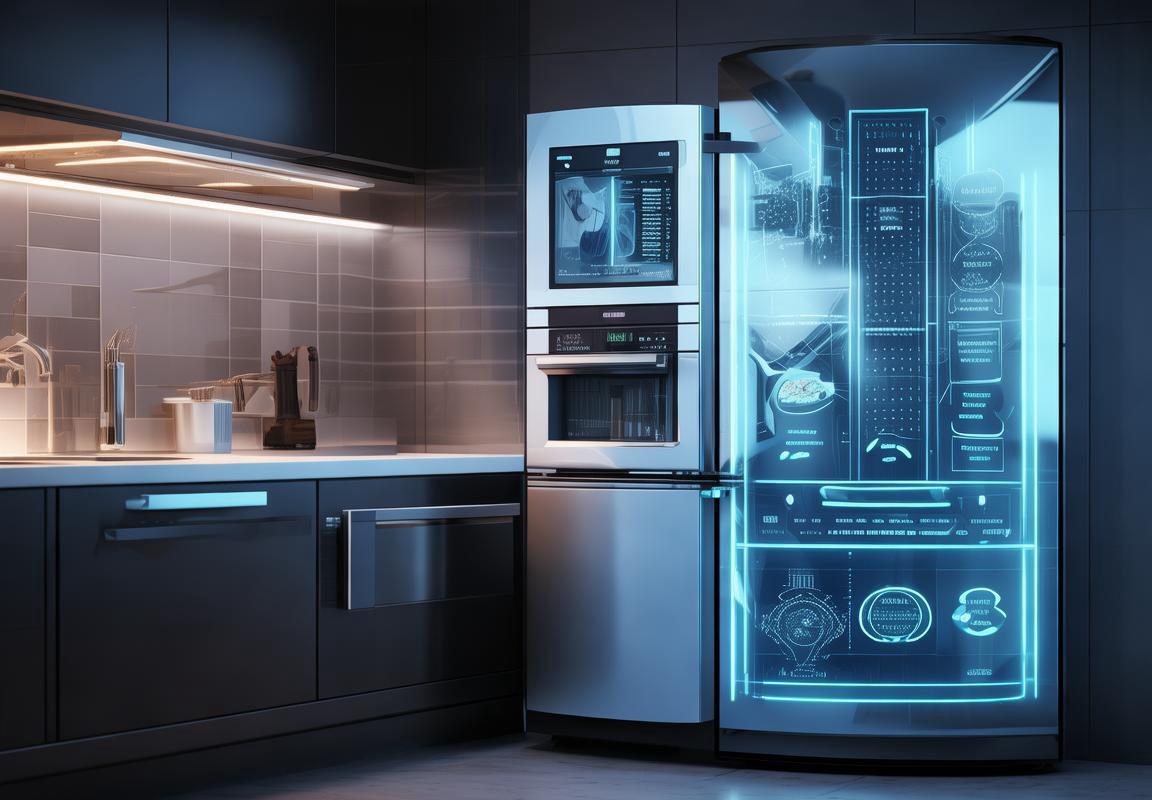
Conclusion
In the ever-evolving landscape of kitchen appliance design, innovation is not just a buzzword; it’s a necessity. The industry is witnessing a transformation that’s reshaping how we interact with our kitchen gadgets. The rise of smart technology, eco-consciousness, and personalized experiences is pushing the boundaries of what’s possible. Let’s delve into the future of kitchen appliance design, exploring the trends and technologies that are poised to redefine the way we cook and live.
The integration of artificial intelligence (AI) is not just a trend; it’s a cornerstone of the future kitchen appliance design. Imagine a fridge that not only keeps your food fresh but also suggests recipes based on your dietary preferences and inventory. Smart appliances will learn from your habits, adapting to your needs and even ordering supplies when you’re running low.
Sustainability is becoming a key driver in kitchen appliance design. As consumers become more environmentally aware, manufacturers are responding with appliances that are energy-efficient and made from recycled materials. From induction cooktops that reduce energy loss to dishwashers that use less water, the future kitchen will be a testament to eco-friendly innovation.
Customization is another trend that’s gaining traction. With the ability to tailor appliances to individual preferences, consumers will have the power to create a kitchen that truly reflects their lifestyle. Imagine being able to choose the color of your oven, the design of your countertop microwave, or even the features of your smart fridge—personalization is set to become a standard in kitchen appliance design.
The kitchen is no longer just a place to cook; it’s a hub for entertainment and social interaction. Appliances that can connect to your home entertainment system, serve as a digital canvas for cooking tutorials, or even double as a smart home control center are becoming more common. The kitchen of the future will be a multifunctional space, blending technology with comfort.
Safety is a paramount concern in kitchen appliance design. Advances in technology are making kitchens safer than ever before. From appliances that can detect gas leaks to those that prevent overheating, the future kitchen will be equipped with safety features that protect both the user and the environment.
As we move forward, the kitchen will become more intuitive. Voice-activated appliances, gesture controls, and even augmented reality (AR) interfaces will make cooking easier and more enjoyable. Imagine being able to point at a recipe on your phone and have your oven automatically adjust its settings—technology is making the kitchen more accessible to everyone.
Collaboration between appliance manufacturers and technology companies is also shaping the future of kitchen appliance design. By combining the expertise of both sectors, we’re seeing appliances that are not just functional but also technologically advanced. This partnership is leading to innovations like smart kitchen systems that can manage your entire kitchen experience, from meal planning to cleanup.
The future of kitchen appliance design is not just about creating new products; it’s about creating a better, more connected, and more efficient way of living. As we continue to push the limits of what’s possible, the kitchen will evolve into a space that not only serves our culinary needs but also enhances our daily lives.
In conclusion, the future of kitchen appliance design is a blend of cutting-edge technology, environmental responsibility, and personalization. It’s a future where the kitchen is not just a room but a dynamic environment that adapts to our needs and preferences. As we look ahead, one thing is certain: the kitchen will continue to be a place where innovation thrives and where the art of cooking meets the science of technology.